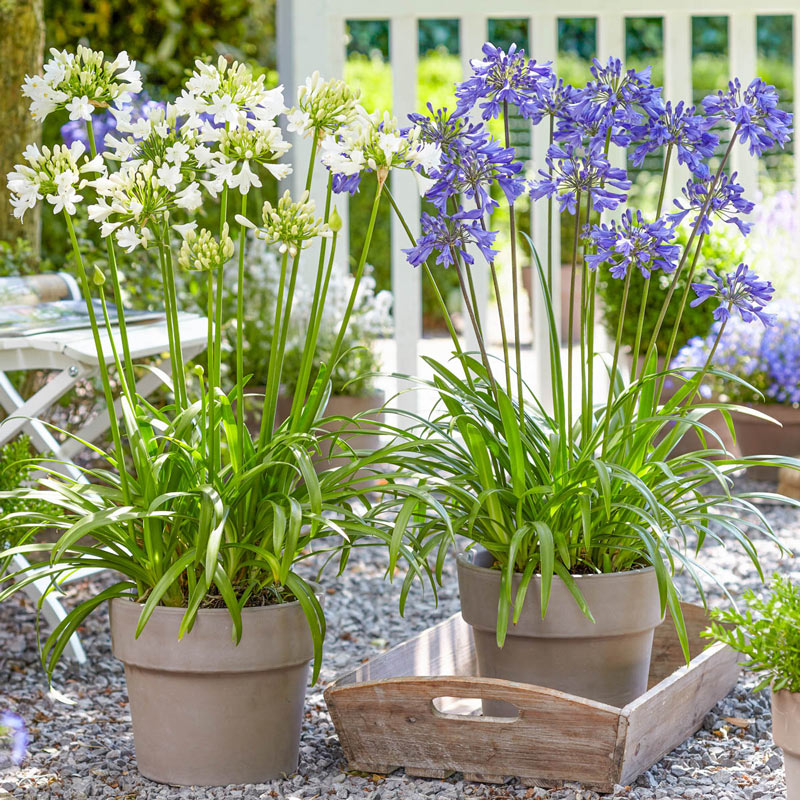Grasping the Art of Agapanthus Care: Crucial Steps for Healthy And Balanced Development and Vibrant Flowers
In the world of cultivation, the growing of agapanthus stands as a fulfilling endeavor for those that look for to nurture these elegant blooming plants. From picking the ideal range to mastering trimming methods, the journey in the direction of growing prospering agapanthus plants is complex and holds the essential to unlocking the complete capacity of these herb treasures.

Picking the Right Agapanthus Range

When picking the ideal Agapanthus range for your yard, consider elements such as climate suitability, bloom shade, and growth behavior. Furthermore, think about the environment in your region to make certain the Agapanthus selection you choose can thrive in your details conditions. Comprehending the growth habit of various Agapanthus varieties is critical for correct positioning within your yard.
Suitable Planting Problems
Thinking about the optimum environmental needs is essential for successful Agapanthus farming. Agapanthus flourishes in well-draining dirt with a somewhat acidic to neutral pH degree. When growing, pick an area that receives complete sunshine to partial shade. In hotter climates, giving some afternoon color can prevent scorching of the leaves. Agapanthus plants are delicate to cool temperatures and need to be protected from frost during winter season.
To make certain healthy and balanced growth and vivid blossoms, plant Agapanthus bulbs at a depth of about 2-4 inches and room them 8-12 inches apart. Mulching around the base of the plants helps preserve wetness and subdues weed growth.
Watering and Feeding Tips
Preserving correct wetness degrees and providing crucial nutrients are essential components in the treatment regimen for Agapanthus plants. When it comes to watering Agapanthus, it is critical to strike a balance. These plants prefer constantly wet soil but are vulnerable to root rot if overwatered.
Fertilizing Agapanthus is crucial for promoting healthy growth and respected blooms. Use a well balanced fertilizer, such as a 10-10-10 formula, in the early spring as new growth emerges. Repeat this application every 6-8 weeks throughout the expanding period. Avoid extreme fertilizing, as it can lead to lavish foliage at the cost of blossoms. Constantly follow the manufacturer's directions for appropriate dilution and application techniques. By adhering to these watering and feeding pointers, you can ensure your Agapanthus plants prosper and generate vivid, lasting flowers.
Trimming Techniques for Agapanthus
Trimming Agapanthus plants at the proper times and with appropriate methods is essential for preserving their health and wellness and promoting optimal growth and blooming. The excellent time to prune Agapanthus is in late winter months or very early springtime prior to new development arises.
For flowered stems, wait until the blooms have perished and after that cut them back to the base. This not just cleans up the plant's appearance yet also encourages the growth of brand-new flower buds. Deadheading invested blossoms can additionally reroute the plant's energy right into creating even more blossoms instead of establishing seeds. Nonetheless, if you intend to accumulate seeds for propagation, leave some blossoms to mature and dry on the plant.
Bear in mind to use clean, sharp devices to make precise cuts and lower the risk of introducing diseases. Agapanthus. Routine trimming will assist maintain your Agapanthus looking healthy and cool while ensuring a plentiful display screen of attractive blooms
Dealing With Common Pests and Illness
After making sure proper trimming methods for Agapanthus, it is crucial to address usual insects and diseases that can impact the health and vigor of these plants. One usual pest that go to this site impacts Agapanthus is the Agapanthus gall midge.
One more common problem is fungal leaf place, which provides as dark lesions on the leaves. To avoid fungal conditions, ensure excellent air flow around the plants, prevent overhead watering, and remove any kind of infected fallen leaves without delay. Additionally, Agapanthus plants can experience origin rot if they are planted in poorly draining pipes soil. To stop this, plant Agapanthus in well-draining dirt and avoid overwatering. By being watchful and taking timely action versus illness and parasites, you can assist your Agapanthus plants prosper and create lively blooms.

Final Thought
In final thought, grasping the art of agapanthus care includes choosing the ideal selection, providing perfect growing problems, proper watering and fertilizing, suitable pruning methods, and dealing with common parasites and illness. By complying with these important actions, you can ensure healthy growth and lively blossoms for your agapanthus plants. Remember to routinely monitor find here and preserve your plants to advertise their total well-being and durability.
To make sure healthy and balanced development and vibrant flowers, plant Agapanthus bulbs at a depth of concerning 2-4 inches and space them 8-12 inches apart. By following these watering and fertilizing pointers, Related Site you can guarantee your Agapanthus plants flourish and produce vibrant, durable flowers.
One common pest that affects Agapanthus is the Agapanthus gall midget. Furthermore, Agapanthus plants can suffer from origin rot if they are grown in badly draining pipes dirt. By adhering to these essential steps, you can ensure healthy and balanced development and lively blooms for your agapanthus plants.